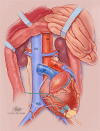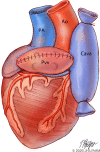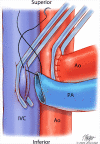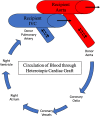Heterotopic Porcine Cardiac Xenotransplantation in the Intra-Abdominal Position in a Non-Human Primate Model
- PMID: 32612124
- PMCID: PMC7329828
- DOI: 10.1038/s41598-020-66430-x
Heterotopic Porcine Cardiac Xenotransplantation in the Intra-Abdominal Position in a Non-Human Primate Model
Abstract
Heterotopic cardiac transplantation in the intra-abdominal position in a large animal model has been essential in the progression of the field of cardiac transplantation. Our group has over 10 years of experience in cardiac xenotransplantation with pig to baboon models, the longest xenograft of which survived over 900 days, with rejection only after reducing immunosuppression. This article aims to clarify our approach to this model in order to allow others to share success in long-term survival. Here, we demonstrate the approach to implantation of a cardiac graft into the intra-abdominal position in a baboon recipient for the study of transplantation and briefly highlight our model's ability to provide insight into not only xenotransplantation but across disciplines. We include details that have provided us with consistent success in this model; performance of the anastomoses, de-airing of the graft, implantation of a long-term telemetry device for invasive graft monitoring, and ideal geometric positioning of the heart and telemetry device in the limited space of the recipient abdomen. We additionally detail surveillance techniques to assess long-term graft function.
Conflict of interest statement
This study was supported by funding from United Therapeutics, Inc and the NIAID, NIH grant 5U19090959-10. David Ayares is an employee of Revivicor, Inc. There are no conflicts of interest to disclose by any other authors.
Figures





References
Publication types
MeSH terms
Substances
LinkOut - more resources
Full Text Sources
Medical

